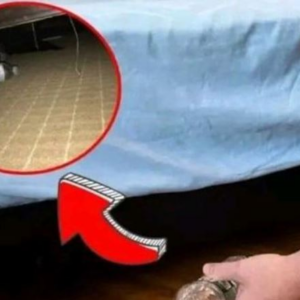It sounds like something from a science fiction or perhaps even a horror story.
Space stations always seem like almost clinical environments that are clean and free of any bacteria.
However, this is far from the truth, and bacteria have recently been observed mutating at the International Space Station.
It has been described as being unlike anything seen before, and that could be alarming news – especially if you happen to be one of the astronauts aboard.
Join us in the article below as we learn more about the study regarding this rather strange occurrence.
Mutating Bacteria on the International Space Station
 Credit: Pixabay
Credit: PixabayMankind has been exploring space for the last 75 years now, sending countless objects into space.
In fact, in 2023 alone, 2,644 objects were hurled into space. It’s almost unimaginable how much bacteria we have sent along with those objects.
This hardly seems to cause much concern, considering that most bacteria are essentially harmless and can’t cause any damage.
However, there are certain strains that are considered dangerous, such as Enterobacter bugandensis.
As luck would have it, it is this exact strain of bacteria that was discovered on the International Space Station in 2018.
Multiple Strains Discovered
At that time, five different strains of the bacteria were observed. However, eight more strains were discovered following additional investigations. These strains were associated with severe clinical infections and were resistant to multiple antibiotic drugs. The normal microbes and bacteria that share space with the astronauts on the International Space Station play an important role in keeping them healthy. However, when a harmful bacteria is present that starts to mutate, it obviously raises concerns for the safety of those aboard. The researchers wrote that they had identified “certain genes from our study that are exclusively present in organisms associated with the ISS, but not in their terrestrial counterpart.”
Penetrating a Highly Controlled Environment
 Credit: Pixabay
Credit: Pixabay
The International Space Station is often described as being a “highly controlled environment, characterized by microgravity, increased CO2 levels, and elevated solar radiation”. However, despite this level of control, these microorganisms still manage to penetrate and mutate in the environment. Some scientists believe that certain microorganisms exposed to the weightlessness of space can quickly change. They become more resistant to antibiotics and grow more harmful. This can happen through rapid mutations or by sharing their genetic material with other microorganisms (horizontal gene transfer).
Finding a Niche in the Environment
 Credit: Pixabay
Credit: Pixabay
It is believed that Enterobacter bugandensis found a niche aboard the space station and eventually grew distinct from its counterparts down on Earth. A study conducted in March 2024 described this specific bacteria as an opportunistic pathogen. Basically, this means that the bacteria can only cause illness in people who are already fighting a disease or have a weakened immune system. While this might not cause an issue for a healthy person on Earth, astronauts often suffer from issues with their immune systems. This is due to the prolonged periods of time they typically spend in space.
The Significance of Understanding the Bacteria
 Credit: Pixabay
Credit: PixabayThe study hoped to learn more about how bacteria mutated in space, as it could cause serious health issues for the astronauts aboard the International Space Station. Regarding the way the pathogen functions within the human body, the study stated that the Enterobacter species act as “opportunistic human pathogens, causing nosocomial infections with bacteremia, lower respiratory tract, osteomyelitis, sepsis, and urinary tract infection.”
What Drives the Bacteria on the International Space Station?
 Credit: Pixabay
Credit: Pixabay
The study suggests that the unique stresses of the space environment, which are very different from anything on Earth, may be causing these genetic changes in bacteria. This hypothesis was central to the study. The researchers hope that the findings will ultimately offer us a window into the dynamics of the microbial ecosystem within the International Space Station. This could go a long way to helping mitigate the risks linked to pathogenic threats the astronauts could potentially face.
Unique Challenges
 Credit: Pixabay
Credit: Pixabay
The discovery of mutating bacteria on the International Space Station makes us aware of all the unique challenges astronauts face while living in space.
While bacteria on Earth are pretty well understood, space adds new environmental factors.
These factors, including microgravity and radiation, can cause microorganisms to change quickly.
This is especially concerning with harmful strains like Enterobacter bugandensis. These types of strains could be risky for astronauts whose immune systems may weaken over time in space.
The Bottom Line on Bacteria in Space
 Credit: Pixabay
Credit: Pixabay
Scientists are studying these mutations in the hope of better understanding how bacteria adapt in space. With this new knowledge, they can learn how to protect astronauts on future missions. It’s all about making sure space travel stays safe and healthy for those brave enough to explore beyond our planet. Plus, who knows what fascinating things we’ll learn about bacteria in these extreme environments in the future?
News
Four Years after My Husband Went Missing, a Dog Brought Me the Jacket He Was Wearing on the Day He Disappeared
Four years after Maggie’s husband vanished during a solo hike, she had come to terms with his loss. But when their old family dog reappeared, carrying her…
Scientists Finally Figure Out What’s Causing Girls to Get Periods at a Younger Age
The onset of menstruation, or menarche, among girls in the United States is occurring at a younger age than in previous generations. This rise is being seen…
Dan Bongino Shares Heartbreaking News With Fans During Show
On a recent episode of his podcast, Dan Bongino, a well-known conservative voice and former Fox News personality, shared the heartbreaking news of his mother’s passing. The…
N47BA: The Plane That Flew While Everyone Inside Was Likely Dead
In 1999, an incident unfolded as an aircraft known as the Learjet 35 took an odd path across the expanse of the United States. Initially, flight N47BA…
Finding Out Why Aldi Doesn’t Let You Rent Carts
Aldi’s Unique Shopping Experience: The Cart Rental System and Its Impact on American Consumers In 2017, the popular European grocery store chain Aldi made its debut in…
Peace of Mind in a Bottle: A Simple Hotel Safety Hack
Checking into a hotel can be an exhilarating experience, especially when you’re traveling to a new destination. However, seasoned travelers understand that being cautious is essential for…
End of content
No more pages to load







